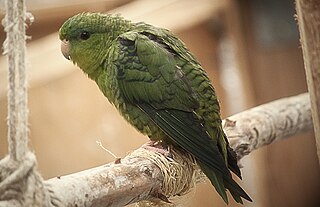 W
WThe barred parakeet, also known as lineolated parakeet, Catherine parakeet or 'linnies' for short, is a small parrot found disjunctly in highland forests from southern Mexico to Panama, in the Andes from western Venezuela to southern Peru and Bolivia, the Santa Marta Mountains in Colombia and the Venezuelan Coastal Range. Its plumage is mostly green with multiple black and dark green stripes or bars, and it has a pale-horn coloured beak. The dark stripes vary in prominence between its two subspecies. Several colour mutants are available in aviculture.
 W
WThe black oropendola is a species of bird in the family Icteridae. It is found in Colombia and Panama. Its natural habitat is subtropical or tropical moist lowland forests.
 W
WThe black-breasted barbet is a species of bird in the Lybiidae family. It is found in Central African Republic, Chad, Sudan, and Uganda.
 W
WThe blackish-blue seedeater is a species of bird in the family Cardinalidae. It is found in Argentina, Brazil, and Paraguay. Its natural habitats are subtropical or tropical moist lowland forest and subtropical or tropical moist montane forest. It is threatened by habitat loss.
 W
WThe blue-chested hummingbird is a species of hummingbird in the family Trochilidae. It is found in Colombia, Costa Rica, Ecuador, Nicaragua, and Panama. Its natural habitats are subtropical or tropical moist lowland forest and heavily degraded former forest.
 W
WThe blue-throated toucanet is a near-passerine bird living in the mountain forests of Costa Rica, Panama and far northwestern Colombia. While considered a species based primarily on morphology, some authorities continue to consider it a subspecies of the emerald toucanet.
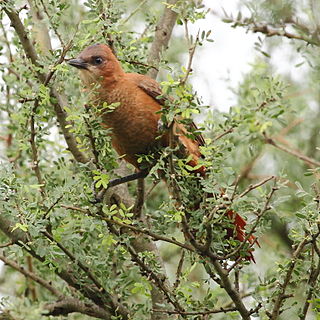 W
WThe brown cacholote is a species of bird in the family Furnariidae. It is mainly found in northern Argentina, western Paraguay and Uruguay; also in southeastern Bolivia and Rio Grande do Sul. Its natural habitats are subtropical or tropical dry forest, subtropical or tropical moist lowland forest, and heavily degraded former forest.
 W
WThe brown-bellied swallow is a species of bird in the family Hirundinidae.
 W
WThe butterfly coquette is a species of hummingbird in the family Trochilidae. It is found in northwestern South America, the region of the western Amazon Basin, in the countries of northwest Brazil, Colombia, Venezuela, Ecuador and Peru. To the southeast it is found in adjacent Bolivia. It was recently split from the festive coquette.
 W
WThe carunculated caracara is a species of bird of prey in the family Falconidae. It is found in páramo in the Andes of Ecuador and Colombia. It is generally uncommon to fairly common.
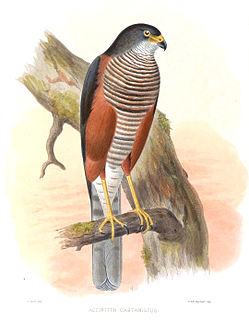 W
WThe chestnut-flanked sparrowhawk is a small west African species of sparrowhawk in the family Accipitridae.
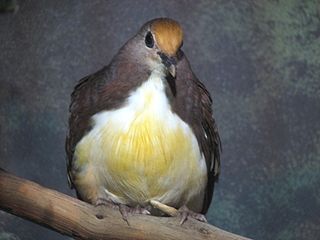 W
WThe cinnamon ground dove also known as golden-heart dove, red-throated ground dove or golden-heart pigeon is a species of ground-dwelling dove in the genus Gallicolumba.
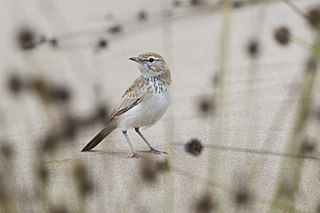 W
WThe dune lark is a species of lark in the family Alaudidae. It is endemic to Namibia where its natural habitat is subtropical or tropical dry lowland grassland.
 W
WThe flammulated owl is a small, nocturnal owl approximately 15 cm (6 in) long with a 36 cm (14 in) wingspan. With such large wings for a small body, they can fly rapidly from tree to tree. Males and females can be distinguished by their weight. Females are larger, ranging from 62–65 g (2.2–2.3 oz) and males are smaller ranging from 50–52 g (1.8–1.8 oz). The owl gets the name flammulated from the flame-like markings on its face. It breeds from southern British Columbia and the western United States to central Mexico. It is a neotropical migrant and winters south of the United States, but also in South Texas, Arizona, and California. Unlike many owls, they are migratory, leaving Canada and the United States in the fall. In the winter, they are found in northern Central America, from southern Mexico to Guatemala and El Salvador. They leave their breeding grounds in August to head to their wintering areas, and then return to their breeding grounds in late April and early May. The flammulated owl is similar in appearance to the western screech owl, but is only about one-quarter the mass, lacks large ear tufts, and has dark eyes and a different voice. The elf owl is smaller and the mountain pygmy owl is about the same size. The call is a series of relatively deep, single or double hoots.
 W
WFraser's eagle-owl is a species of African owl in the family Strigidae. It is named after the British zoologist Louis Fraser.
 W
WThe golden-collared honeycreeper is an uncommon species of Neotropical bird in the tanager family Thraupidae. It is the only member of the genus Iridophanes.
 W
WThe golden-collared macaw or yellow-collared macaw is a small mostly green Central South American parrot, a member of a large group of Neotropical parrots known as macaws. It has a bright yellow patch on the back of its neck/upper shoulders that gives the species its name. In aviculture, it is one of a number of smaller macaws often called "mini-macaws".
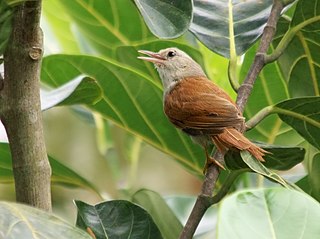 W
WThe grey-headed spinetail is a species of bird in the family Furnariidae. It is endemic to Brazil.
 W
WHartlaub's gull, also known as the king gull, is a small gull, which is a non-migratory breeding resident endemic to the Atlantic Ocean coastline of South Africa and Namibia. Although it is predominantly coastal or estuarine, it is not a pelagic species, and is rarely seen at sea far from land. It was formerly sometimes considered to be a subspecies of the silver gull, and, as is the case with many gulls, it has traditionally been placed in the genus Larus but is now placed in the genus Chroicocephalus.
 W
WThe horned coot is a species of bird found in the Andes of South America. It was described by Bonaparte in 1853 based on a specimen collected in Bolivia. For a long time it was known only from the type specimen.
 W
WThe lined antshrike is a species of bird in the family Thamnophilidae.
 W
WThe long-toed stint, Calidris subminuta, is a small wader. The genus name is from Ancient Greek kalidris or skalidris, a term used by Aristotle for some grey-coloured waterside birds. The specific subminuta is from Latin sub, "near to" and minuta, "small" from its similarity to the little stint, Calidris minuta.
 W
WThe Middendorff's grasshopper warbler is a species of Old World warbler in the family Locustellidae. It breeds in East Siberia to North Japan - Kamchatka Peninsula and North Kuril Islands and winters in the Philippines, Borneo and Sulawesi and in small numbers China, Hong Kong, South Korea, Malaysia, Taiwan and the U.S.A.
 W
WThe midget flowerpecker is a species of bird in the family Dicaeidae. It is found in the Solomon Islands archipelago. Its natural habitats are subtropical or tropical moist lowland forest, subtropical or tropical mangrove forest, and subtropical or tropical moist montane forest.
 W
WThe Mindanao bleeding-heart, also known as Bartlett's bleeding heart dove, Barlett's bleeding heart pigeon and the hair-breasted bleeding heart, is a species of bird in the pigeon family. It is endemic to the Philippines. It is so named because of a red blotch on its breast. The generic name derives from a fusion of the Latin gallus ("chicken") and columba ("pigeon").
 W
WThe Neotropical palm swift or fork-tailed palm swift is a resident breeding bird from Colombia, Venezuela, the Guianas and Trinidad south to northeastern Peru and Brazil.
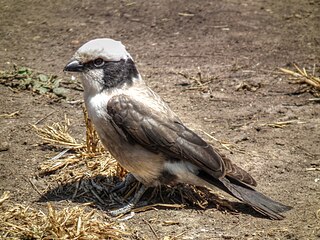 W
WThe northern white-crowned shrike or white-rumped shrike, is a shrike found in dry thornbush, semi-desert, and open acacia woodland in east Africa from south eastern South Sudan and southern Ethiopia to Tanzania. Its binomial name commemorates the German naturalist and explorer Eduard Rüppell.
 W
WThe oceanic flycatcher is a species of bird in the family Monarchidae. It is endemic to Micronesia and can be found on the Caroline Islands.
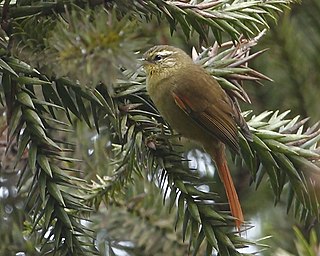 W
WThe olive spinetail is a species of bird in the family Furnariidae. It is found in northeastern Argentina, southern Brazil, and eastern Paraguay. Its natural habitats are temperate forests and subtropical or tropical moist lowland forests. It is known to hybridize with Cranioleuca pyrrhophia in Southern Rio Grande do Sul, Brazil.
 W
WThe oriole whistler, also known as the yellow-throated whistler, is a species of bird in the family Pachycephalidae, which is endemic to the Solomon Islands (archipelago).
 W
WThe ornate flycatcher is a species of bird in the family Tyrannidae. It is the only member of the genus Myiotriccus. It is found in Colombia, Ecuador, and Peru.
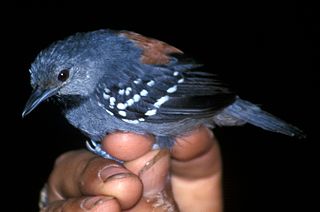 W
WThe ornate stipplethroat or ornate antwren is a species of bird in the family Thamnophilidae. It is found in Bolivia, Brazil, Colombia, Ecuador, and Peru. Its natural habitats are subtropical or tropical moist lowland forests and subtropical or tropical swamps.
 W
WThe pale-bellied tyrant-manakin, or pale-bellied neopelma, is a species of bird in the family Pipridae.
 W
WThe Philippine megapode, also known as the Philippine scrubfowl or the Tabon scrubfowl, is a species of bird in the family Megapodiidae. It is found in northeastern Borneo, Sulawesi and the Philippines. Its natural habitats are subtropical or tropical dry forest, subtropical or tropical moist lowland forest, and subtropical or tropical moist montane forest.
 W
WThe piping crow is a species of bird in the family Corvidae. It is endemic to Sulawesi in Indonesia. Its natural habitat is subtropical or tropical moist lowland forest.
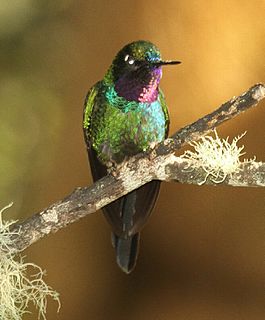 W
WThe purple-throated sunangel is a species of midsized hummingbird in the genus Heliangelus. It is found in western Ecuador and northwestern Peru. Its natural habitats are subtropical or tropical moist montane forest and heavily degraded former forest at an elevation ranging from 2150 to 3050 meters. It forages in the midstory of the forest for nectar. The sunangel is one of the more common hummingbirds in the Andean highlands and is more habituated to both human settlement and open habitats than many of its relatives. It is listed by the IUCN as a species of Least Concern due to its large range and its treatment as a frequently-seen species across much of its range.
 W
WThe red-capped myzomela, also known as the scarlet-naped myzomela, is a species of bird in the family Meliphagidae. It is found in the Solomon Islands archipelago. Its natural habitats are subtropical or tropical moist lowland forests, subtropical or tropical mangrove forests, and subtropical or tropical moist montane forests.
 W
WThe red-crowned amazon, also known as the red-crowned parrot, green-cheeked amazon or Mexican red-headed parrot, is a highly social, endangered amazon parrot native to northeastern Mexico and the southwestern United States. The current native wild population of between 1,000 and 2,000 is decreasing. The main threats to the native bird's survival are the illegal export of trapped birds from Mexico to the United States for the pet trade and the destruction of their natural habitat, the lowland forests of northeastern Mexico.
 W
WThe red-legged kittiwake is a seabird species in the gull family Laridae. It breeds in the Pribilof Islands, Bogoslof Island and Buldir Island in the Bering Sea off the coast of Alaska, and the Commander Islands, Russia and spends the winter at sea.
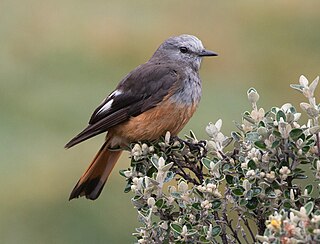 W
WThe red-rumped bush tyrant is a species of bird in the family Tyrannidae, the only one in the genus Cnemarchus. It is found in Bolivia, Colombia, Ecuador, and Peru. Its natural habitats are subtropical or tropical moist montane forests and subtropical or tropical high-altitude grassland.
 W
WThe rusty-vented canastero, or creamy-breasted canastero, is a species of bird in the family Furnariidae.
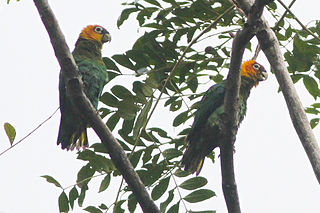 W
WThe saffron-headed parrot is a species of parrot in the family Psittacidae. It was previously placed in the genus Pionopsitta, but moved out, as it is not as close to the type species Pionopsitta pileata as it was believed. It was briefly placed in Gypopsitta, but this is a junior synonym of Pyrilia and thus the saffron-headed parrot is now placed in the latter genus.
 W
WThe smoky-fronted tody-flycatcher is a species of bird in the family Tyrannidae, and one of twelve in the genus Poecilotriccus.
 W
WThe Solomons cockatoo, also known as the Ducorps's cockatoo, Solomons corella or broad-crested corella, is a species of cockatoo endemic to the Solomon Islands archipelago. This small white cockatoo is larger than the Tanimbar corella yet smaller than the umbrella cockatoo. The species is common across most of the Solomons, absent only from Makira in the south. It inhabits lowland rainforests, secondary forests, cleared areas and gardens.
 W
WThe sooty gull is a species of gull in the family Laridae, also known as the Aden gull or Hemprich's gull. It is found in Bahrain, Djibouti, Egypt, Eritrea, India, Iran, Israel, Jordan, Kenya, Lebanon, Maldives, Mozambique, Oman, Pakistan, Qatar, Saudi Arabia, Somalia, Sri Lanka, Sudan, Tanzania, United Arab Emirates, and Yemen. As is the case with many gulls, it has traditionally been placed in the genus Larus. The sooty gull is named in honour of the German naturalist Wilhelm Hemprich who died in 1825 while on a scientific expedition to Egypt and the Middle East with his friend Christian Gottfried Ehrenberg.
 W
WThe Sri Lanka wood pigeon is a pigeon which is an endemic resident breeding bird in the mountains of Sri Lanka.
 W
WStephan's emerald dove is a species of bird in the family Columbidae. It is found in Sulawesi, New Guinea and the Solomon Islands.
 W
WThe streak-throated bush tyrant is a species of bird in the family Tyrannidae.
 W
WThe stripe-headed sparrow is an American sparrow which breeds from Pacific coastal south-western Mexico, including the transverse ranges, Cordillera Neovolcanica to Pacific coastal northern Costa Rica.
 W
WThe stripe-necked tody-tyrant is a species of bird in the family Tyrannidae. It is found in Bolivia, Brazil, Colombia and Peru. Its natural habitats are subtropical or tropical moist lowland forests and subtropical or tropical dry shrubland.
 W
WThe three-wattled bellbird is a Central American migratory bird of the cotinga family. The sexes are very dis-similar in appearance. The male has a white head and throat and the remaining plumage is chestnut brown. From the base of his beak dangle three long, slender, black wattles that he uses in display. The female has olive plumage with yellowish streaked underparts and a yellow vent area.
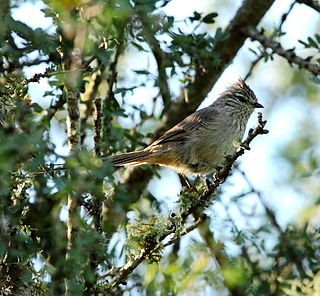 W
WThe tufted tit-spinetail is a species of bird in the family Furnariidae. It is found in Argentina, Brazil, Paraguay, and Uruguay. Its natural habitats are subtropical or tropical moist lowland forests, subtropical or tropical dry shrubland, and subtropical or tropical moist shrubland.
 W
WThe turquoise jay is a species of bird in the family Corvidae.
 W
WThe white-headed barbet is a species of bird in the family Lybiidae. It is found in Angola, Cameroon, Central African Republic, Chad, Democratic Republic of the Congo, Kenya, Nigeria, South Sudan, Tanzania, and Uganda.
 W
WThe white-lored tyrannulet is a species of bird in the family Tyrannidae. It is found in Bolivia, Brazil, Colombia, Ecuador, French Guiana, Guyana, Peru, Suriname, and Venezuela. Its natural habitats are subtropical or tropical moist lowland forest and subtropical or tropical swamps.
 W
WThe white-thighed swallow is a species of bird in the family Hirundinidae. Its genus, Neochelidon, is monotypic.
 W
WThe white-throated swift is a swift of the family Apodidae native to western North America, south to cordilleran western Honduras. Its coastal range extends as far north as Northern California, while inland it has migratory populations found throughout the Great Basin and Rocky Mountain regions, ranging as far north as southern British Columbia. White-throated swifts are found in open areas near cliffs, rock faces, or man-made structures, where they roost. Swifts are social birds, and groups are often seen roosting and foraging for flying insects together.
 W
WThe white-winged black tyrant is a species of bird in the family Tyrannidae. It has often included the Sao Francisco black tyrant as a subspecies. It is found in Argentina, Bolivia, Chile, Paraguay, Peru, and Uruguay. Its natural habitats are subtropical or tropical moist montane forests, subtropical or tropical moist shrubland, and heavily degraded former forest.
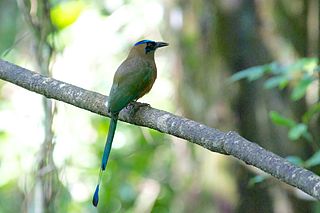 W
WThe whooping motmot is a colorful near-passerine bird found in forests and woodlands of southern Panama to northwestern Peru. This species and the blue-capped motmot, Lesson's motmot, Trinidad motmot, Amazonian motmot, and Andean motmot were all considered conspecific.
 W
WThe yellow-breasted racket-tail is a species of parrot in the family Psittaculidae. It is endemic to Indonesia where it is found in Sulawesi's northern peninsula and the Togian Islands in the Gulf of Tomini. Its natural habitat is subtropical or tropical moist lowland forests. It is threatened by habitat loss.